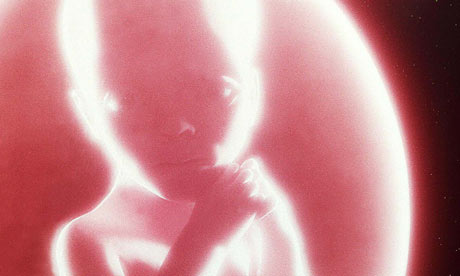http://www.theaustralian.com.au/news/health-science/watch-this-space/story-e6frg8gf-1225710664198 wrote:
The Australian: May 09, 2009 12:00AM
Greg Callaghan
<<AFTER you've spent more than 20 years hunting for an alien signal, you think you'd be celebrating if you noticed a mysterious pulse suddenly rising up on your computer readouts. A regular pulse, amid the random clatter of the cosmos, suggests that someone very smart at the other end is sending a message.
But when Ragbir Bhathal, an astrophysicist at the University of Western Sydney, who teaches the only university-based course on SETI (search for extraterrestrial intelligence) in Australia, detected the suspicious signal on a clear night last December, he knew better than to crack open the special bottle of champagne he has tucked away for the history-making occasion. Instead, he's spent the past few months meticulously investigating whether the unrecognised signature was caused by a glitch in his instrumentation, a rogue astrophysical phenomenon, or some unknown random noise. Even if he picks up the signal again - he's been scouring the same co-ordinates of the night sky on an almost daily basis since - the scientific rule book dictates he'll need to get it peer-reviewed before he can take his announcement to the world. "And that is a lot of ifs," he concedes.
The hunt for extraterrestrial life has been boosted recently by the discovery last month of a rocky world not unlike our own, about 20 light years away, which its Swiss discoverers have dubbed Gliese 581e, the latest in a long line of planet discoveries during the past decade (350 and counting). Although Gliese 581e is too close to its host sun to support life, it's the first planet believed to be rocky like our own, a kind of super-hot Earth quite unlike the long line of gas and ice giants discovered to date.
With the launch of NASA's Kepler space telescope in March, specifically designed to detect smaller Earth-like planets, astronomers are confident that the discovery of a blue planet, orbiting in the so-called Goldilocks zone, where liquid water can support life, is edging closer by the day. But it will still be up to ground-based telescopes to confirm the mass of the planet, as space-based telescopes such as the Kepler can only yield its approximate diameter.
The quest of SETI astronomers, however, is not just for the discovery of an Earth-like planet but for life intelligent enough to transmit meaningful signals across vast stretches of space. For more than 40 years, they have been doggedly searching for alien transmissions via radio telescope, tracking tens of millions of radio signals across different sections of the night sky, but so far the results have been, by any scientific standard, dismal. There has been a handful of false alarms - the detection of short, intense bursts of electromagnetic energy that might be transmitted by an advanced civilisation - but these have been later shown to be caused by other cosmic phenomena, such as quasars.
The belief that an alien civilisation might also be listening to our television and radio signals has also been dashed by the recent discovery that the signals don't, as once thought, reach into deep space: they eventually become so weak that they disappear in the roar of the electromagnetic noise. That is partly why the OZ OSETI (o for optical) project and a handful of its US counterparts have turned to laser pulse technology in what is the most ambitious effort yet to detect a signal from an alien species. "For an advanced civilisation, radio wave technology would be old hat," Bhathal says. "My strong feeling is that if there are (extraterrestrial intelligence) civilisations out there, they will send the signal by laser pulses or laser flashes."
In 2000, science fiction writer Arthur C. Clarke, a former patron of the Australian SETI project, advised Bhathal to "let the better spectrum, light" drive his search for ET. Bhathal's OZ OSETI project is the only dedicated project for searching for ET in the optical spectrum in the southern hemisphere. "NASA is already using lasers for space communication and it's not unrealistic to imagine that an extraterrestrial intelligence might be using them as well," Bhathal says. "In terms of Earth technology today, we have achieved a maximum of 10
15 watts of laser power for a brief period, butan advanced civilisation could have lasers with powers of 10
25." He admits, however, that our failure to pick up any interstellar signals so far could mean that advanced civilisations are using a communications technique still not discovered on Earth. "It is risky to judge everything by our own technology," he says.
The search field of the OZ OSETI project is 100 light years from Earth: a short walk around the block in galactic terms, but an area large enough to contain at least 1000 stars and possibly 20 times as many planets. While the discovery of worlds outside our solar system has given weight to the idea that the universe may be teeming with life - albeit sprinkled across an incomprehensibly wide area - it's the key cosmic numbers that have astronomers in disagreement. For example, how often do the magic ingredients for life - a rocky planet, located at just the right distance from its sun at justthe right moment in the sun's life - come together? If the answer is very often, there ought to be lots of planets like our own, and life may be more the rule than a miraculous accident. In 1960, Frank Drake, now a professor of astronomy at the University of Southern California, estimated that there could be up to a million technological civilisations in the Milky Way galaxy alone. But Bhathal believes "we are nowhere near being able to put a sensible figure on how common life may be".
What we do know is that our sun is a perfectly ordinary star in a rotating island of 100 billion stars, the Milky Way galaxy, which in turn is just one of 100 billion or so galaxies in the observable universe. The laws of mathematics weigh heavily in favour of the idea that we are not alone. Moreover, the discovery of more than 300 planets suggests that solar systems such as ours may not be all that unusual. It's very likely that smaller and rockier worlds are more common than the gas giants, which are easier to find because of the greater wriggle they exert in a star's path.
"The low-mass planets are much harder to find because they have a smaller Doppler amplitude," says Chris Tinney of the department of astrophysics at the University of NSW. "It might also mean we are not looking in the right way. But we're now certain that low-mass planets are more common. The Kepler space telescope will no doubt help usfind them." Tinney explains that while the basic techniques for detecting planets have been around for some time, what's revolutionised the field has been the dramatic technological improvements in spectrographs and telescopic power. "Planet searching has now become a sexy field and private donors in the US are putting money into it," Tinney says.
Other satellite projects such as the Allen telescope array, named after Paul Allen, the Microsoft co-founder who donated $US13million towards its creation, are also coming online. The array uses an incredible 350 satellite dishes to scan the sky for the faint whisper of radio signals from celestial objects such as quasars. There's also the hardware already in space if ET happens to be passing through our neighbourhood. The Pioneer 10 spacecraft, launched in 1972, included an aluminium plate with human figures, a drawing of the planets and an outline of the spacecraft's course. The last, extremely weak signal from this surprisingly robust spacecraft was received in 2006. If it's still around, Pioneer 10 would now be hurtling somewhere in the interstellar void outside our solar system.
With the discovery of more planets, the relatively new science of exobiology, dedicated to the study of extraterrestrial life, has gained the gleam of scientific respectability. But the field is still trying to overcome the UFO stigma, laments Ain de Horta, a project scientist with the Australian SETI Institute. "There are still those in the scientific community who look down their noses at us, but that's increasingly unusual these days. There's a growing recognition that this is important science, with the potential to answer one of the most fundamental questions facing humanity. Those who lump us in with the UFO nuts tend not to be scientists," says de Horta. "We're counting on the physics being the same elsewhere in the universe."
De Horta's institute is, in collaboration with CSIRO's Parkes telescope, scouring radio waves in its search for ET. "If an alien civilisation has developed technology it's likely to be based on most ofthe same principles as our own. Like us, forexample, they would have discovered radio waves." Even so, de Horta concedes, life elsewhere in the universe might resemble nothing we know on Earth. It could be moulded by different chemistries, different gravity and different climatic environments.
In any case, it's highly unlikely we'll ever have a face-to-face meeting, as space travel even at Star Trek's warp drive wouldn't get us there in less than thousands of years. A two-way conversation would take decades. And even for that to happen, says de Horta, we would need intelligent life to be reaching its technological prime at the same time as ours and transmitting radio waves at a wavelength that we can detect. "The whole argument about communication hinges on the longevity of a species and their use of a technology that is recognisable to us," he says.
What all the planet hunters and SETI have in common is a white-hot passion for discovering alien worlds. Bhathal knows that the odds of finding anything are long and the area he is scanning, as big as it is, may still not be extensive enough to yield anything, but he's determined to keep his eyes on the sky. "There (have) to be other Earth-like worlds. Otherwise what do we have? A whole lot of wasted space.">>
 A Laser Strike at the Galactic Center
A Laser Strike at the Galactic Center

